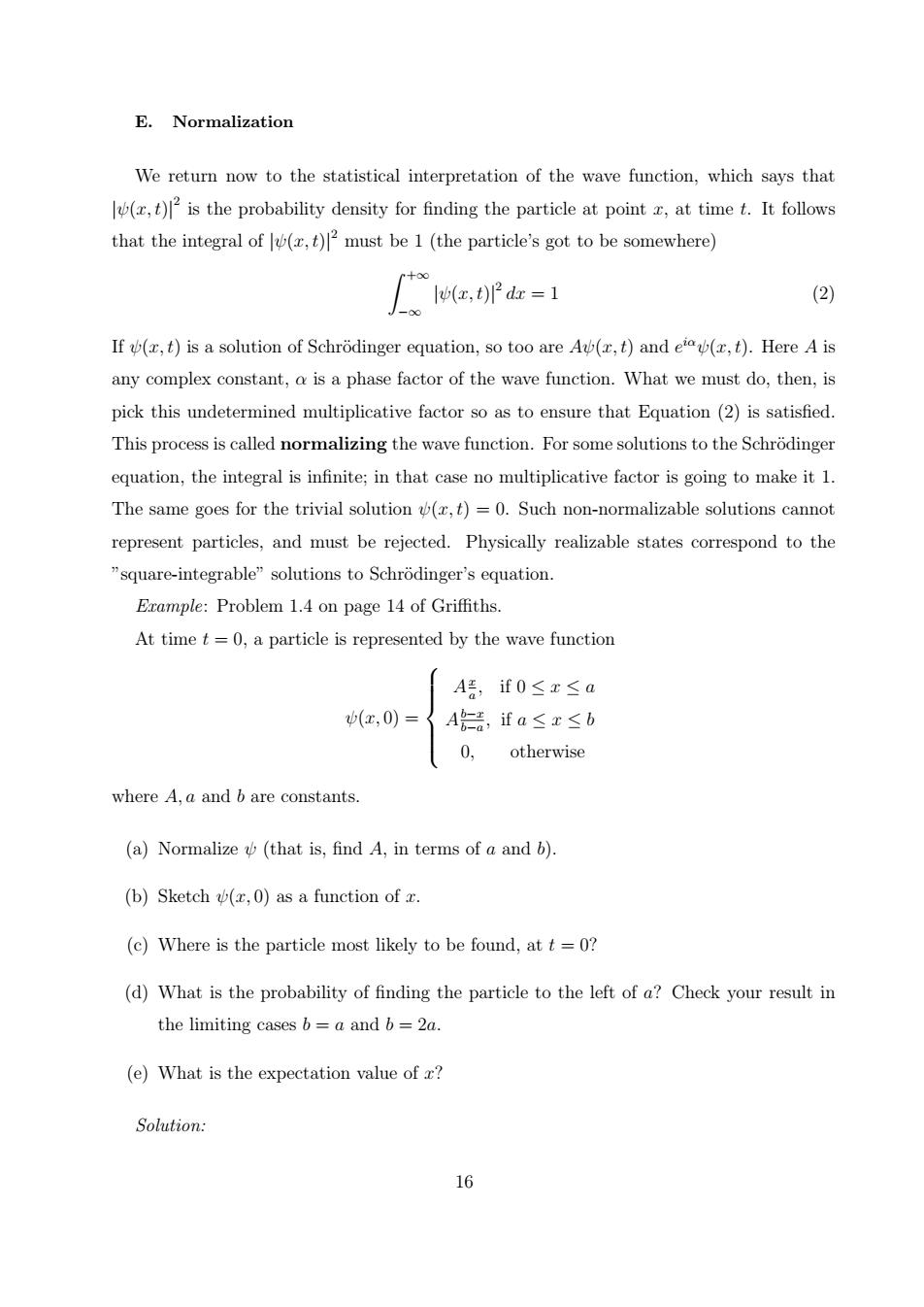正在加载图片...

E.Normalization We return now to the statistical interpretation of the wave function,which says that (,)2is the probability density for finding the particle at point r,at time t.It follows that the integral of(,)must be 1 (the particle's got to be somewhere) (2) If(t)is a solution of Schrodinger equation,so too are Av(,t)and e(,).Here A is any complex constant,a is a phase factor of the wave function.What we must do,then,is pick this undetermined multiplicative factor so as to ensure that Equation(2)is satisfied. This process is called normalizing the wave function.For some solutions to the Schrodinger equation,the integral is infinite;in that case no multiplicative factor is going to make it 1. The same goes for the trivial solution(,t)=0.Such non-normalizable solutions cannot represent particles,and must be rejected.Physically realizable states correspond to the square-integrable"solutions to Schrodinger's equation. Erample:Problem 1.4 on page 14 of Griffiths At timet=0,a particle is represented by the wave function A话,if0≤x≤a (x,0)= A,ifa≤E≤b 0, otherwise where A,a and b are constants. (a)Normalize(that is,find A,in terms of a and b). (b)Sketch(,0)as a function of z. (c)Where is the particle most likely to be found,att=0? (d)What is the probability of finding the particle to the left of a?Check your result in the limiting cases b=a and b=2a. (e)What is the expectation value of r? Solution: 16 E. Normalization We return now to the statistical interpretation of the wave function, which says that |ψ(x, t)| 2 is the probability density for finding the particle at point x, at time t. It follows that the integral of |ψ(x, t)| 2 must be 1 (the particle’s got to be somewhere) Z +∞ −∞ |ψ(x, t)| 2 dx = 1 (2) If ψ(x, t) is a solution of Schr¨odinger equation, so too are Aψ(x, t) and e iαψ(x, t). Here A is any complex constant, α is a phase factor of the wave function. What we must do, then, is pick this undetermined multiplicative factor so as to ensure that Equation (2) is satisfied. This process is called normalizing the wave function. For some solutions to the Schr¨odinger equation, the integral is infinite; in that case no multiplicative factor is going to make it 1. The same goes for the trivial solution ψ(x, t) = 0. Such non-normalizable solutions cannot represent particles, and must be rejected. Physically realizable states correspond to the ”square-integrable” solutions to Schr¨odinger’s equation. Example: Problem 1.4 on page 14 of Griffiths. At time t = 0, a particle is represented by the wave function ψ(x, 0) = A x a , A b−x b−a , 0, if 0 ≤ x ≤ a if a ≤ x ≤ b otherwise where A, a and b are constants. (a) Normalize ψ (that is, find A, in terms of a and b). (b) Sketch ψ(x, 0) as a function of x. (c) Where is the particle most likely to be found, at t = 0? (d) What is the probability of finding the particle to the left of a? Check your result in the limiting cases b = a and b = 2a. (e) What is the expectation value of x? Solution: 16